This article provides readers with essential information about basic operation and basic time-current characteristics of branch-circuit-rated, low-voltage fuses and circuit breakers. These overcurrent protective devices (OCPDs) are typically used in main service disconnects, feeders and branch circuits of residential, commercial, institutional, and industrial electrical systems. There are other OCPDs used, such as relays and supplementary OCPDs, which this article does not directly address. However, many of these principles presented also apply to the other types of devices. This article explains the basics, and as you might suspect, there are product designs for fuses and circuit breakers where the operation principles are more complex and may deviate from what is presented. However, you need to walk before you run. Part II, which will be in the May/June issue, will cover important information regarding OCPD ratings, application in designs, and NEC compliance aspects.
Why Is Overcurrent Protection So Important?
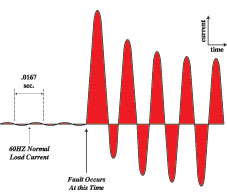
Figure 1. Oscillograph representation of a fault
The author remembers having a conversation some years ago with a well-known industry expert who is very knowledgeable in the National Electrical Code. This expert views grounding and bonding and overcurrent protection as the two most important protective principles in the Code. Grounding and bonding is important for two reasons: (1) improper grounding and bonding can kill people and pose a fire hazard and (2) adequate grounding and bonding helps ensure the overcurrent protective devices operate in a reasonable time by providing a low impedance and effective path for fault current. Overcurrent protection is important to the overall objective of electrical safety. If the designer, installer, maintainer or inspector does not get overcurrent protection right, there can be the threat of fires and personal safety hazards due to (1) long-time thermal ignition of materials from improper overload protection, (2) explosive ignition and flash hazard from improper short-circuit protection or (3) the explosive ignition and flash hazards from improper voltage-rated or improper interrupting-rated overcurrent protective devices.
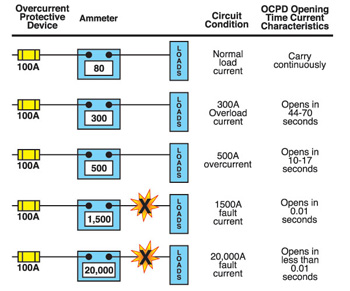
Figure 2. Example of fuse time-current characteristics
The proper selection of overcurrent protective devices entails many considerations, some mandatory and some discretionary. The mandatory considerations include complying with NEC requirements and ensuring OCPDs are applied within their ratings and limits per their capabilities, which are typically evidenced by specific product standard listing and labeling [110.3(A)(1)].
Type Overcurrents
OCPDs are intended to protect against the effects of potentially harmful overcurrents. An overcurrent is either an overload current or a short-circuit current, which often is referred to as fault current. Overload current is an excessive current relative to normal operating current, but one that is confined to the normal conductive path provided by the conductors and other components and loads of the distribution system. As the name implies, a short-circuit current is one which flows outside the normal conducting path. Article 100 has definitions for overcurrent and overload. One of the important overcurrent protection principles that typically holds true is that the higher the overcurrent magnitude, the faster the overcurrent must be interrupted.
Overloads
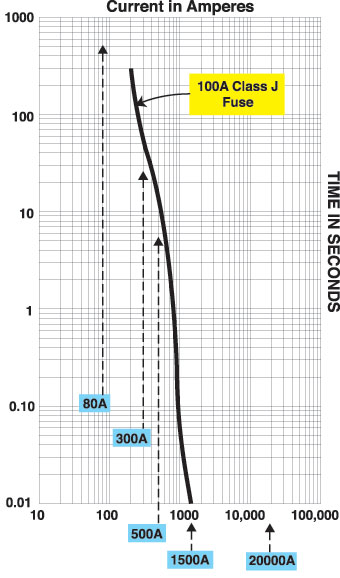
Figure 3. Example of fuse minimum melt and total clear band
Overloads are most typically between one and six times the normal current level. Most often, they are caused by harmless temporary surge currents that occur when motors start up or transformers are energized. Harmful sustained overloads can result from defective motors (such as worn motor bearings), overloaded equipment, or too many loads on one circuit. Such sustained overloads are destructive and must be cut off by protective devices before they damage the distribution system or system loads. However, since they are of relatively low magnitude, removal of the overload current within a few seconds to many minutes will generally prevent circuit or equipment damage. A sustained overload current results in overheating of conductors and other components and will cause deterioration of insulation, which may eventually result in severe damage and short circuits if not interrupted.
Short-Circuit or Ground-Fault Currents
Whereas overload currents occur at rather modest levels, short-circuit or ground-fault currents occur in a wide range of current magnitude. For instance, a fault may be a lower level ground fault (a high impedance fault between phase and ground), a high-level ground fault (a low impedance fault between phase and ground), a high-level bolted three-phase fault (a low impedance fault between all three phases), or a moderate to high level three- phase arcing fault (a moderate or low impedance fault, through air, between all three phases). Since the load is faulted out of the circuit, the circuit impedance is drastically reduced. Since I (current) = E (voltage) divided by Z (impedance), the resulting lower impedance causes the immediate increase in the current (see figure 1). Fault currents can be many hundreds of times larger than the normal operating current. A high-level fault may be 50,000 A (or larger). If not cut off within a matter of a few thousandths of a second, damage and destruction can become rampant; there can be severe insulation damage, melting of conductors, vaporization of metal, ionization of gases, arcing, and fires. Simultaneously, high-level short-circuit currents can develop huge magnetic-field stresses. The magnetic forces between bus bars and other conductors can be many hundreds of pounds per linear foot; even heavy bracing may not be adequate to keep them from being warped or distorted beyond repair. In the last 10 years or so, the industry has begun recognizing the severe flash hazards and blast hazards to personnel due to arcing fault current.
Time-Current Characteristics

Figure 4. Typical 100A, 600V, Class RK1, dual-element, time-delay fuse
If you understand the physical properties and how the devices operate, you may retain the information better and understand the reasons for specific requirements. The following is a brief, simplified version. There are many types of circuit breakers and fuses, but all follow common, basic principles.
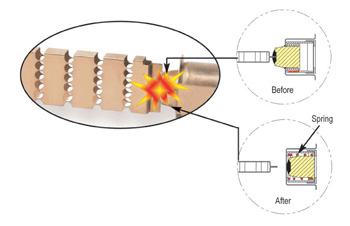
Figure 5. Overload operation
Let’s start with the principle that OCPDs are intended to continuously carry the load current, and if there is an overcurrent condition, their purpose is to open in time to prevent extensive damage to the circuit components. This is a requirement under fault conditions in Section 110.10. The allowable speed of response of an overcurrent protective device can vary depending on the magnitude of overcurrent. If the overcurrent is a light overload, it may be permissible to permit the current to flow for many minutes. As a matter of fact, some circuit components, such as motors, primary winding of transformers and capacitors, have harmless high starting or energizing inrush current which can be many times greater than the normal full load current. So the application of OCPDs on these circuits require that the OCPD permit intentional overload currents for a period of time without opening. If the overcurrent is a faulted circuit, rapid OCPD response is desired to minimize circuit component or equipment damage. The examples in figures 2 and 3 illustrate OCPD time-current characteristics via a circuit diagram with ammeter readings and OCPD opening times for various overcurrents. For higher levels of overcurrent, the OCPD operates faster. Also, this example illustrates that the OCPD characteristics can be represented by time-current characteristic curves. See figures 2 and 3, and for the overcurrents depicted in figure 2 determine the opening times from the curve in figure 3. On the time-current curve, the horizontal axis is the amount of current in amperes and the vertical axis is time in seconds. Note: both the current axis and time axis are logarithmic scale, which is the typical representation for OCPD time-current characteristics. The fuse time-current characteristic is properly represented by a tolerance band with the minimum melt curve as the boundary on the left and the total clear curve as the boundary on the right. So for a given overcurrent value, the fuse opening time is represented by a range. For instance in figure 2, the example with a 500 A overcurrent, the fuse will open somewhere between 10 and 17 seconds (see figure 3). Most fuse manufacturers provide minimum melt fuse curves and total clear fuse curves on separate pages. For simplicity, some users just want a fuse represented by a single line curve not a band, so manufacturers may also represent fuses via an average melt curve. An average melt curve, if overlaid, would fall between the minimum melt and total clear curves.
Fuse Operation

Figure 6. During short-circuit operation
Fuse operation is based on basic thermal principles. As current flows through a fuse, the resistance of the fuse element creates heat. If the current is below the amp rating of the fuse, the fuse will carry the current continuously (dependent on sizing per the NEC). In this case, the fuse operates in a thermally stable condition and the internal temperature does not reach a point where the fuse opens. The thermal energy created by the current flowing through the fuse element dissipates to the ambient. In overcurrent conditions, the internal temperature of the fuse elevates; the dissipation of thermal energy is less than the thermal energy created. Whether the fuse opens or how fast it takes to open is dependent on the amount of overcurrent and the duration of the overcurrent condition. The following is a series of illustrations to explain how fuses operate. Shown is a dual-element, time-delay fuse construction. There are other type constructions, but the principles are similar. Figure 4 shows a typical 100 A, 600 V, Class RK1, dual-element, time-delay fuse which has a 300,000 A interrupting rating. Artistic liberty is taken to illustrate the internal portion of this fuse. The real fuse has a non-transparent tube and special small granular, arc quenching material completely filling the internal space (see figure 4).
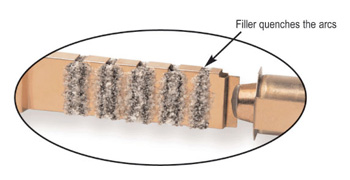
Figure 7. After short-circuit current interruption
Figure 5 illustrates how a dual-element fuse operates in the overload range. Under sustained overload conditions, the trigger spring fractures the calibrated fusing alloy and releases the “connector.” The insets represent a model of the overload element before and after. The calibrated fusing alloy connecting the short-circuit element to the overload element fractures at a specific temperature due to a persistent overload current. The coiled spring pushes the connector from the short-circuit element and the circuit is interrupted.

Figure 8. Example of current-limitation for fault current
Figures 6 and 7 illustrate a fuse operation in the short-circuit current range. A short-circuit current causes the restricted portions of the short-circuit element to vaporize and arcing commences (figure 6: the arcing is depicted by animation). The arcs burn back the element at the points of the arcing. Longer arcs result, which assist in reducing the current. Also, the special arc quenching filler material contributes to extinguishing the arcing current. The clearing time of a fuse under short-circuit current conditions is the time it takes to melt or vaporize the fuse element’s restricted portions plus the arcing time. The time to melt or vaporize depends on the fuse design and current magnitude. The time duration from the point of the fuse element melting or vaporization until the current is interrupted is rather fast. Typically, this time will be a fraction of a half cycle. For current-limiting fuses in their current-limiting range, the total time to clear is ½ cycle or less (melting plus clearing).
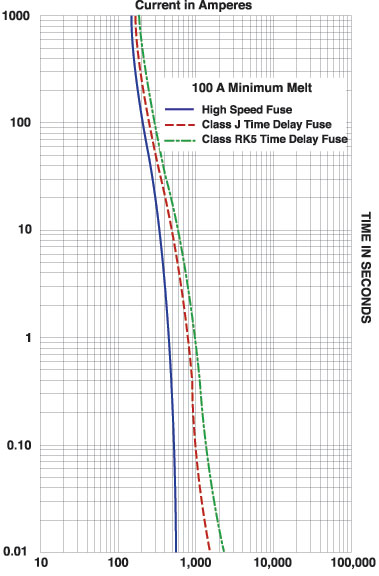
Figure 9. Illustrates various fuse characteristic curves
The special small granular, arc-quenching material plays an important part in the interruption process. Figure 7 shows an actual photo of the internal fuse element after interrupting a fault. The filler assists in quenching the arcs; the filler material absorbs the thermal energy of the arcs, bonds together and creates an insulating barrier. This process helps in forcing the current to zero. It is this entire process that enables fuses to be current-limiting. What does this mean? When the fault current is in the fuse’s current limiting range, the fuse cuts-off the current before it reaches its first peak current value by vaporizing the restricted portions of the fuse element. Then the current is forced to zero via the process with arcing and the filler quenching the arcing before the first ½ cycle of the fault current. Current-limitation greatly reduces the energy that is released in the circuit (see figure 8).
The interruption process is critical for a fuse. To have sufficient voltage rating and interrupting rating a fuse must be designed properly. Critical in achieving a specific voltage rating are the number of restricted portions or neck-down sections in series. For the fuse shown in this example, there are five restricted portions in series and this fuse is rated 600 Vac. If this fuse were misapplied in a 1500 V circuit and the fuse tried to interrupt, the arcing at the restricted portions would probably continue until so much energy was released that the fuse could violently rupture. There are not enough restricted portions in series for this 600 V fuse to interrupt 1500 V. Similarly, when a fuse attempts to interrupt high fault currents, the fuse must be designed to withstand the tremendous pressure produced inside the fuse body as a result of the rapid vaporization and arcing of a portion of the fuse element. If a fuse tries to interrupt a fault current greater than its interrupting rating, the fuse can violently rupture. Section 110.9 requires that the available short-circuit current at the line terminals does not exceed a fuse’s interrupting rating or a circuit breaker’s interrupting rating. This is a matter of safety.
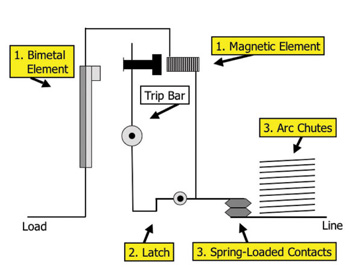
Figure 10. Circuit breaker operating functions
Several different fuse characteristic types have evolved over the years, each having different time-current characteristics and different degrees of current-limitation under short-circuit conditions. For instance there are non-time-delay fuses (for non-inductive loads), time-delay fuses (for motor loads and now used for most general-purpose applications and even static loads), high-speed fuses (often referenced as semiconductor fuses used for the protection of power electronics). Figure 9 illustrates the minimum melt time-current curve characteristic for three 100 A, 600 V fuse types:
- High-speed fuse
- Class J time-delay fuse
- Class RK5 time-delay fuse
Circuit Breaker Operation
Circuit breakers are mechanical overcurrent protective devices. All circuit breakers share three common operating functions:
- Current sensing means:
A. Thermal
B. Magnetic
C. Electronic - Unlatching mechanism: mechanical
- Current/voltage interruption means (both)
A. Contact parting: mechanical
B. Arc chutes
To interrupt an overcurrent, the chain of events is significantly different from that of a fuse. First, the circuit breaker senses the overcurrent. If the overcurrent persists for too long, the sensing means causes or signals the unlatching of the contact mechanism. The unlatching function permits a mechanism to start the contacts to part. As the contacts start to part, the current is stretched through the air and arcing between the contacts commences. The further the contacts separate the longer the arc, which aids in interrupting the overcurrent. However, in most cases, especially for fault current, the contacts alone are not sufficient to interrupt. The arcing is thrown to the arc chutes which aid in stretching and cooling the arc so that interruption can be made. Figure 10 shows a simplified model with the three operating functions shown for a thermal magnetic circuit breaker, which is the most commonly used circuit breaker. Also, it should be noted that there are various contact mechanism designs that can significantly affect the interruption process.
Circuit Breaker Overload Operation
Figures 11A and 11B illustrate circuit breaker operation by the thermal bimetal element sensing a persistent overload. The bimetal element senses overload conditions similar to the sensor in a HVAC bimetal thermostat. In some circuit breakers, the overload sensing function is performed by electronic means. In either case, the unlatching and interruption process is the same as illustrated in figures 11A and 11B. Figure 11A illustrates, as the overload persists, the bimetal sensing element bends. If the overload persists too long, the force exerted by the bimetal sensor on the trip bar becomes sufficient to unlatch the circuit breaker. Figure 11B shows that once a circuit breaker is unlatched it is on its way to opening. The spring-loaded contacts separate and the overload is cleared. There can be some arcing as the contacts open, but the arcing is not as prominent as when a short-circuit current is interrupted.
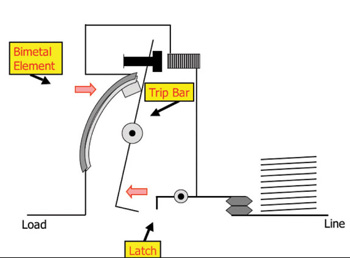
Figure 11a. Circuit breaker senses overload and unlatches
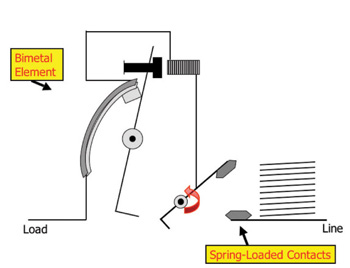
Figure 11b. Circuit breaker contacts open and clear overload
Circuit Breaker Instantaneous Trip Operation
Figures 12A, 12B, and 12C illustrate circuit breaker instantaneous trip operation due to a short-circuit current. The magnetic element senses higher level overcurrent conditions. This element is often referred to as the instantaneous trip, which means the circuit breaker is opening without intentional delay. In some circuit breakers, the instantaneous trip function is performed by electronic means. In either case, the unlatching and interruption process is the same as illustrated in figures 12B and 12C.
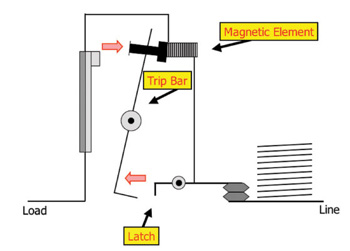
Figure 12a. Circuit breaker instantaneous trip sensing and unlatching
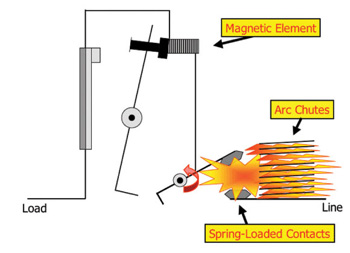
Figure 12b. Circuit breaker contacts part and arcing

Figure 12c. Circuit breaker contacts open and fault cleared
Figure 12A illustrates the operation under a short-circuit condition. The high rate of change of the current causes the trip bar to be pulled toward the magnetic element. If the fault current is high enough, the strong force causes the trip bar to exert enough force to unlatch the circuit breaker. This is a rapid event and is referred to as instantaneous trip.
Figure 12B shows that once unlatched, the contacts are permitted to start to open. It is important to understand that once a circuit breaker is unlatched it is designed to open; however, the current interruption does not commence until the contacts start to part. As the contacts start to part, the current continues to flow through the air (arcing current) between the stationary contact and the movable contact. At some point, the arc is thrown to the arc chutes, which stretch and cool the arc. The speed of the contacts opening depends on the circuit breaker design. The total time of the current interruption for circuit breaker instantaneous tripping is dependent on the specific design and condition of the mechanisms. Smaller amp rated circuit breakers may clear in ½ to 1 cycle. Larger amp rated circuit breakers may clear in a range typically from 1 to 3 cycles depending on the design. Circuit breakers that are listed and marked as current-limiting can interrupt in a ½ cycle or less when the fault current is in the circuit breaker’s current-limiting range.
With the assistance of the arc chutes, the current gets interrupted when the current approaches zero in the normal course of the alternating current and the contacts travel a sufficient distance (see figure 12C). There can be a tremendous amount of energy released at the contact interruption path and arc chutes during the current interruption process. Circuit breakers are designed to have specific interrupting ratings at specific voltage ratings. For instance, a circuit breaker may have a 14,000 A interrupting rating at 480 Vac and 25,000 A at 240 Vac. If a circuit breaker is misapplied by installing it in a circuit with an available short-circuit current greater than the circuit breakers interrupting rating, the circuit breaker can violently rupture when attempting to interrupt.
Typical Circuit Breaker Time-Current Curve
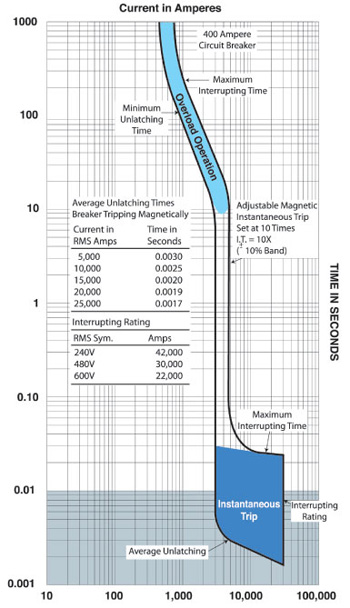
Figure 13. 400 A molded case circuit breaker time-current curve
Circuit breaker curves are represented in various formats as time-current curves. Figure 13 illustrates a 400 A molded case circuit breaker curve. This is an older style circuit breaker time-current curve representation and the author has not seen curves published with this much detail in recent time. The newer curves do not provide the unlatching time or unlatching curve for the instantaneous trip. However, this curve format is good for learning how a circuit breaker functions. Once you understand there is an unlatching curve, you can interpret the modern curves to make evaluations, if necessary.
The shaded “Overload Operation” portion represents the characteristics of the overload protection with the bimetal element as described in figures 11A and 11B. Notice the representation is a tolerance band not a line curve. This is similar to the fuse tolerance band. If an overload persists long enough, the circuit breaker is intended to open at some point within that “Overload Operation” band. For instance, a 1000 A overload current would be expected to be interrupted between 70 seconds and 300 seconds (see figure 13).

Figure 14. Circuit breaker with overload protection and short-time delay setting
The shaded “Instantaneous Trip” portion represents the characteristics of the short-circuit protection with the magnetic element as described in figures 12A, 12B, and 12C. The band for a specific level of current represents the time of unlatching, parting of the contacts, and extinguishing the current/arcing. The average unlatching time for the instantaneous trip function is shown as a diagonal line; this corresponds to the unlatching described in figure 12A. Once a circuit breaker is unlatched, it still needs to part its contacts and extinguish the arcing; this corresponds to figures 12B and 12C. For instance, on this 400 A circuit breaker curve, a 10,000 A fault current would unlatch the circuit breaker in 0.0025 seconds. Then the contacts part and the current extinguished within 0.028 seconds (approximately 1½ cycles). Note: figure 13 shows the characteristics from 0.001 to 0.01 seconds to illustrate the circuit breaker’s unlatching characteristics. Most fuse and circuit breaker curves show characteristics from 0.01 seconds and greater.
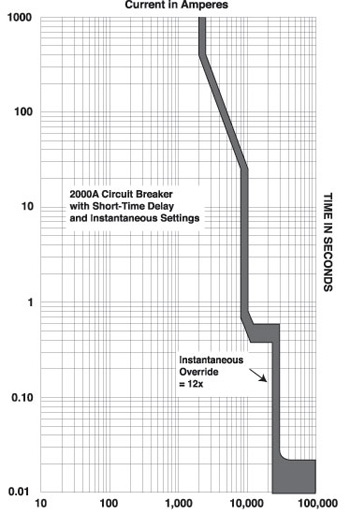
Figure 15. Circuit breaker with overload protection, short-time delay, and instantaneous trip override
There is a variety of circuit breaker types for different application needs. For instance, there are instantaneous trip-only circuit breakers that are intended for motor branch circuit short-circuit protection. There are circuit breakers that have a short-time delay setting that are used either in lieu of the instantaneous trip element (see figure 14) or in conjunction with an instantaneous trip override (see figure 15).
Conclusion and Part II
The information in this Overcurrent Protection Basics, Part I, provided an understanding of how fuses and circuit breakers operate and on the basics of how to read time-current curves. In the next issue, Overcurrent Protection Basics, Part II, we leverage off this material to look at the important ratings for fuses and circuit breakers and other key important criteria that lay the foundation for a better understanding of overcurrent protection and code-compliance.







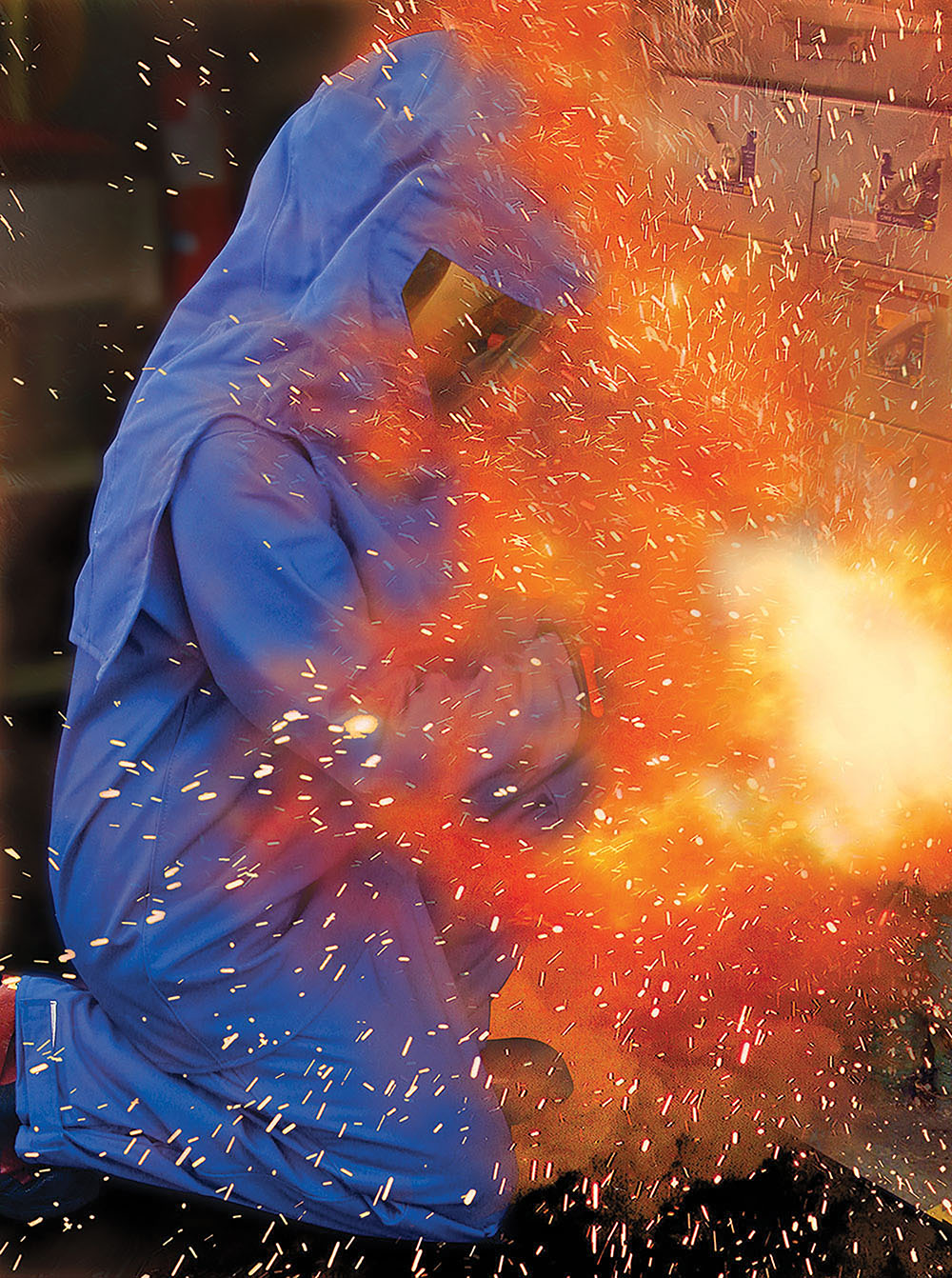

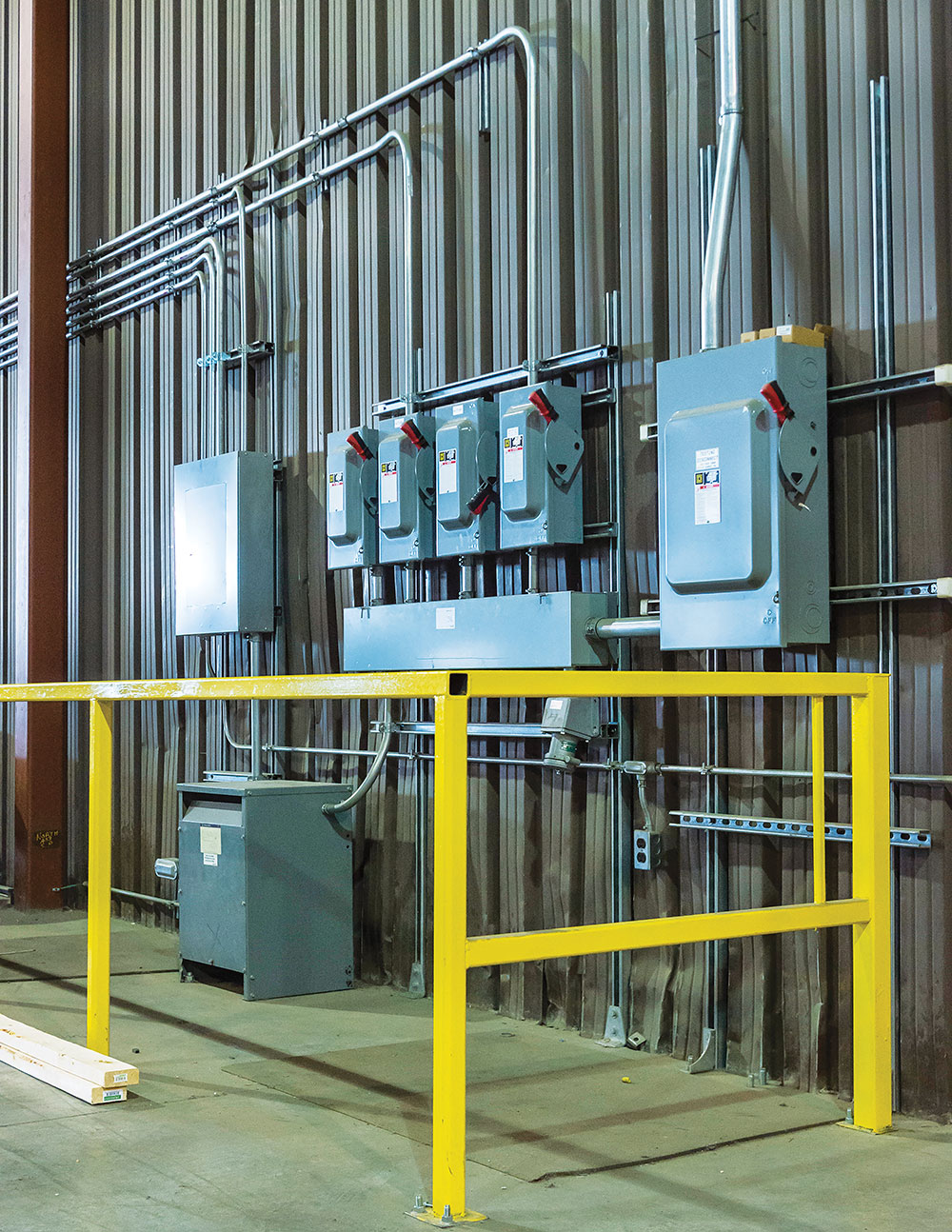
Find Us on Socials